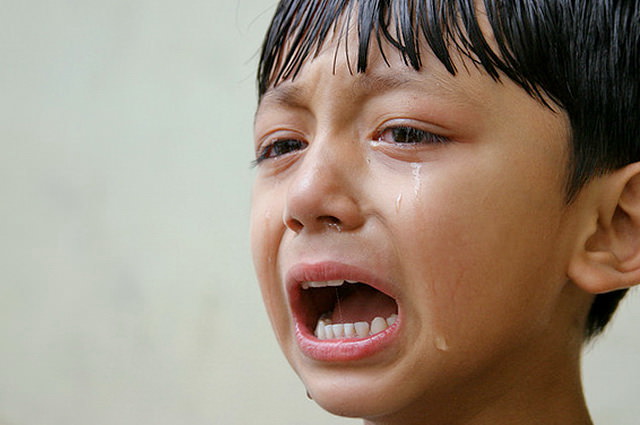Troubleshooting Common Problem Areas in Children With Autism

When dealing with a child on spectrum, the presence of sudden or chronic behaviours that are aggressive, odd, or socially inappropriate can present challenges one may feel ill-equipped to understand and deal with. Being prepared ahead of time can help a great deal in managing these issues in the calm, logical way. The following questions and answers cover some of the most common problems that arise with the behaviour of children (and some adults) who have Autism Spectrum Disorder (ASD):
My child’s behaviour has changed suddenly; what should I do?
First off, have the child seen by a doctor. Children with ASD sometimes can’t identify and/or vocalize their feelings, so may not be able to express the pain caused by a medical condition that has arisen quickly, making it important to rule such out.
Once medical issues have been found absent, assess whether or not changes to the child’s routine or environment have happened recently. Remember that even small changes, such as re-arranging a room or changing lighting or shampoo brands, may upset someone with ASD and bring out “coping behaviours”.
My child doesn’t understand physical boundaries and tries to hug strangers; what should I do?
Remember that social boundaries are very challenging for someone with ASD to grasp; they quickly assume what is okay at home or with friends is okay as a general rule.
To combat this, try writing a “social story” (with pictures if possible) explaining why people hug friends and family, but not strangers. A comic strip style of format is often ideal for these.
Try to teach more appropriate ways of showing affection to strangers rather than just limiting the problem behaviour, as those with ASD should be encouraged to interact socially as much as possible/enjoyable. Suggest waving to strangers instead, for example, or holding the door open for them. Reward the child for practicing these alternate skills.
Consider conducting a general social skills “training course” for the child, explaining in story form why people greet each other in the ways they do, part as they do, etc.
My child gets very anxious during breaks and at lunch hour; how do I help her deal with this?
School break times often stress those with ASD because they are both unstructured time and often involve sensory overload (noise from many children playing, lots of movement).
Consider having a support worker stay with your child during these times and structure the break time around certain games each day to create a routine.
You can also look for special support groups at the school for those with ASD that focus on teaching children social skills in a way they can handle. This way the child both develops a peer network and receives structure and support, with someone on hand to help her troubleshoot her particular issues with social interaction.
Give your child methods for indicating her distress to staff if she can’t easily vocalize it, such as stress scales, so that staff know when it’s time for a “time out” from social situations. Likewise, teach your child healthy relaxation techniques to use during these breaks, such as listening to soft music or practicing deep breathing.
If breaks are still simply too overwhelming, seek permission from the school for your child to spend them in the library or computer room.
My child is very resistant to homework, what should I do?
Firstly, you should avoid writing this off as mere rebellion or stubbornness or laziness. Homework is a legitimately hard concept for many with ASD, because they may find school stressful and feel a strong urge to avoid reminders of it, they have a hard time organizing themselves well enough to cope with homework and deadlines, and they may simply not understand why schoolwork should be done at home (it conflicts with their sense of routine).
To help your child cope with having to do homework, try the following:
- Make sure he or she keeps a written diary of all that needs to be done each day so it feels structured and not overwhelming.
- Suggest your child do his or her homework at school during breaks and lunch hour. This can reduce the anxiety of unstructured breaks and reduce the amount of work to be done at home, a win-win for the child. There may also be after school homework clubs the child can make use of, which has the added bonus of encouraging interaction in a structured way.
- Make sure to reward the child for homework that is completed and structure in relaxation time.
My child reacts badly when I say ‘no’ to something.
To start with, differentiate between whether or not the child is truly resisting the concept of being refused, or if he or she just doesn’t like the sound of the work “no”; some people with ASD can be quite sensitive to certain sounds. Try using a softer-sounding word than “no” (or a visual indicator) and see if the child responds more positively.
If it’s about the concept of refusal, try to explain the “why” behind the refusal. Often children with ASD struggle to ascertain the motivations of others, which can make them rigid or defensive. If the child logically understands why the answer is no, he or she may compromise with it much more easily. Keep timetables showing that enjoyable activities will happen again on another day, to help a child disengage from enjoyed pastimes.
Remember to react calmly—some people with ASD will be overwhelmed by emotion, while others may seek the stimulation of being shouted at—and make rules, boundaries, and schedules clear, concise, and predictable.
Image Credit: https://www.flickr.com/photos/binusarina/3889528397
